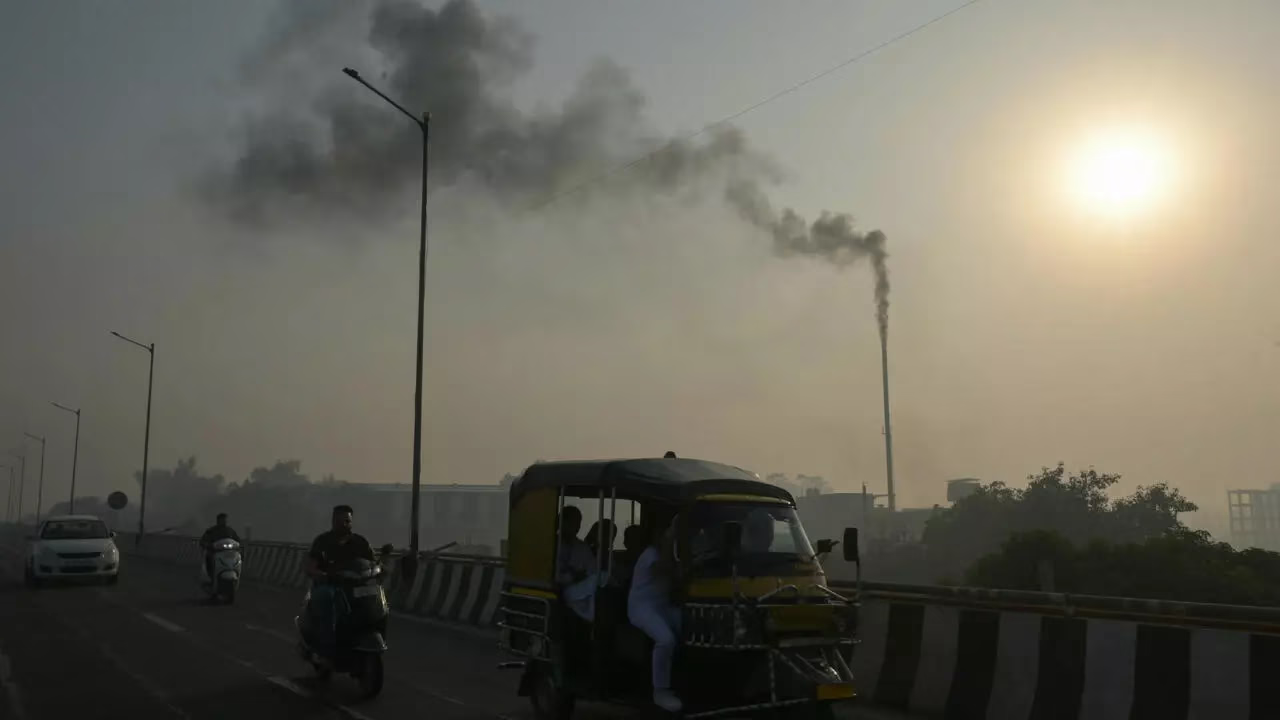Even if current national commitments to reduce greenhouse gas emissions are met, global warming could still be limited to only about 2.5°C by the end of the century—a level insufficient to prevent devastating consequences for the planet, the UN has warned.
Most scientists agree that exceeding the 1.5°C threshold above pre-industrial levels would lead to catastrophic outcomes, and that every effort must be made to keep temperature increases as close to that limit as possible.
Still, according to the UN Environment Programme (UNEP), the world is on track to exceed the 1.5°C threshold within the next few years, as heat-trapping emissions continue to rise and reached a new record in 2024.
The alarming report was released just days before world leaders meet in Brazil on Thursday and Friday ahead of the COP30 climate summit, which will take place in Belém, a city in the Amazon region.
With the 1.5°C threshold now seen as inevitable, attention is shifting to how quickly temperatures can be brought back to safer levels. “Our task is simple but not easy: to make the overshoot as small and as short-lived as possible,” UN Secretary-General António Guterres said on Tuesday while presenting UNEP’s “Emissions Gap” report.
The world’s largest polluters, bearing the main responsibility for the climate crisis, are urged to take on far more ambitious emission-reduction commitments to bring the planet’s warming trajectory back to 1.5°C by the end of the century. Yet, as a new UNEP report notes, “the latest round of pledged emission targets has changed almost nothing.”
Even full compliance would not prevent 2.5°C of warming
According to the latest estimates, even if all global climate pledges were fully implemented, the planet’s temperature would still rise by 2.3–2.5°C by 2100.
Such a scenario poses a deadly threat to countries most vulnerable to sea-level rise and extreme weather. The failure of global efforts to contain these processes will form the backdrop to the COP30 summit.
The Heat Ahead

Scientists Record Irreversible Climate Changes
An International Report Warns of “Tipping Points” for Reefs and Ice Sheets

'Climate Realism'
A World Three Degrees Warmer—and Colder in Blood
According to scientists, an increase in temperature beyond 1.5°C—and especially by another full degree—heightens not only the intensity of hurricanes, floods, and other natural disasters, but also the likelihood of irreversible climatic tipping points.
With temperatures now 1.4°C higher than in preindustrial times, the Earth has already become too hot for most tropical coral reefs to survive. Even with warming below 2°C, the planet’s ice sheets and the Amazon rainforest could undergo deep and lasting transformations whose effects would be felt worldwide.
Under the Paris Agreement, each new round of climate pledges must be more ambitious than the previous one to ensure that long-term warming stays “well below” 2°C and as close as possible to 1.5°C. Yet, according to UNEP, as of September 30, only about one-third of countries had submitted their 2035 emission-reduction targets despite being explicitly required to do so.
Current global warming projections are 0.3°C lower than last year’s, but as Anne Olhoff notes, only a small fraction of that improvement stems from new commitments. Of the 0.3°C reduction, about 0.1°C results from updated methodology, and another 0.1°C from measures introduced by the Biden administration.
However, that effect may not materialize, because Donald Trump has vowed to withdraw the United States from the Paris Agreement and undo his predecessor’s climate policy. “Exclude the United States, and progress will be severely constrained,” Olhoff said.
According to her, dozens of other climate pledges made by governments in recent months “do not have a noticeable impact on temperature projections.” “You could call this a decidedly bleak picture,” she added.
Emissions Keep Rising Despite International Pledges
In 2024, global greenhouse-gas emissions rose by 2.3% compared with the previous year—mainly due to increases in India, as well as in China, Russia and Indonesia.
This increase, the report estimates, is “quite large by the standards of recent years and comparable to the emissions growth rates of the 2000s.”
The G20 economies—the world’s most powerful and affluent—accounted for three-quarters of global emissions. Of the six largest emitters, the European Union alone managed to cut greenhouse gases in 2024.
Despite mounting pressure and calls to set more ambitious targets, the UN Environment Programme notes that most countries are failing to meet even their earlier 2030 plans.
On the basis of current climate policies, the planet is on track to warm by roughly 2.8°C by the end of the century.
At COP30, participants are expected to try to dispel fears that climate action has slipped down the agenda—in a context where the United States is distancing itself from the process, collective targets are being missed, and governments are focused on other priorities.
“We still need unprecedented cuts to greenhouse-gas emissions within a rapidly shrinking window and amid a highly challenging geopolitical context,” UNEP chief Inger Andersen wrote in the report.
